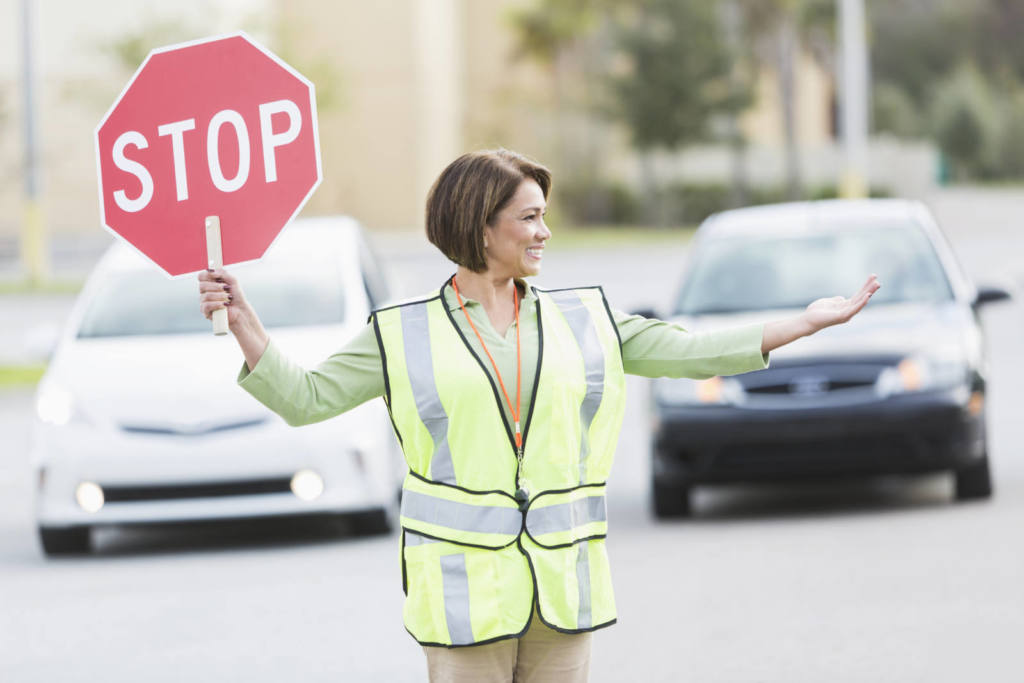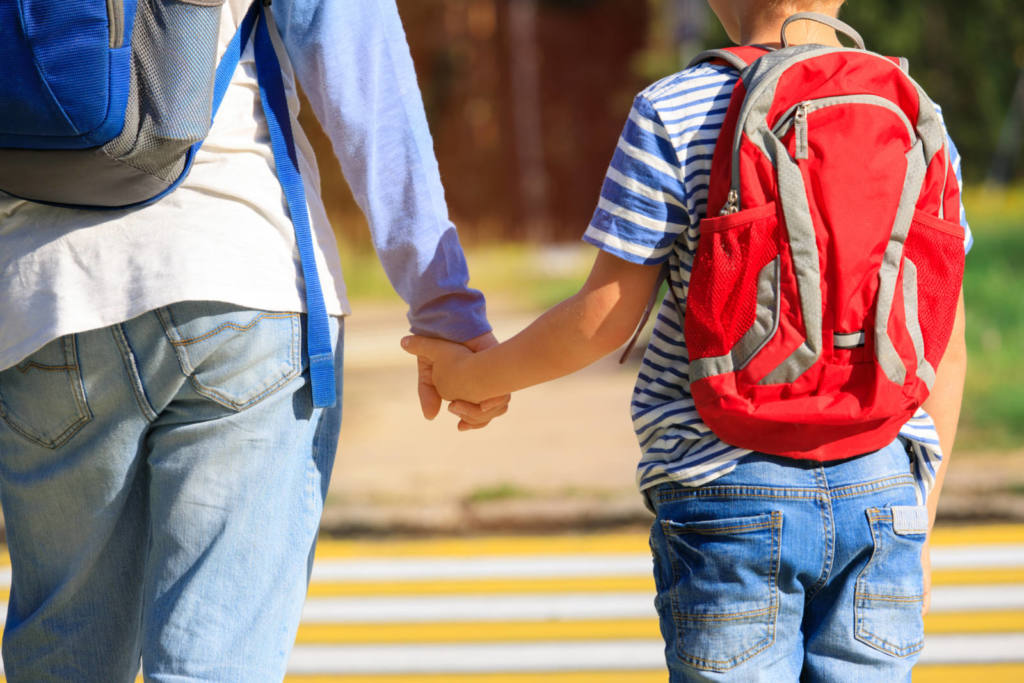
Crossing the street might seem like a straightforward task, but there are many things to be aware of as a crossing guard. Kids, drivers, high traffic volume, and distractions are all circumstances to juggle for a crossing guard. We have three inside tips every crossing guard wants drivers, parents and kids to know to keep school zones safe.
The Rules Are Different:
Tip number one: When approaching or using a school crosswalk, the rules are different. At a traditional crosswalk, drivers can proceed once pedestrians clear the crosswalk on the opposite side. However, drivers need to wait at an active school crosswalk until it is clear of children and the crossing guard. They don’t always end on the same side. Often the crossing guard has to cross back to continue helping other students at the next crossing interval. It is crucial drivers are aware of this and wait to see that the crossing guard is clearly out of the way before proceeding. Click here to watch a short video on how this plays out.

Everyone Can Help:
In a school zone, there are lots of moving parts. Traffic volume spikes in a relatively small area, and it can be hard to maneuver parents locating kiddos, the herding of small pedestrians, and long lines of cars. The second tip you should know is that being aware and alert are essential ways to create a safer school zone.
As a pedestrian: The best way to help is to follow the safety laws by using designated walking areas. Teach children to avoid crossing in the middle of the street or crossing between parked cars. The risk of an accident is minimized by assigning a meeting place where a crosswalk is convenient and used.
As a driver: Be on high alert and exercise patience. When driving in a school zone, help contribute to a safe school zone by focusing on driving and refraining from distracted and aggressive driving. Be extra cautious especially near crosswalks. Lastly, go the posted speed limit to maintain a safe environment for everyone around.
Walk or Bike To School:

The less traffic around a school zone, the better. When more parents use active transportation to get their kids to and from school, it becomes more efficient and safer for children. With crossing guards already in place to help ensure safety, reducing traffic makes their job and children safer in school zones. Plus, when kids walk or bike to school, they can enter in the Walk & Roll Challenge to win prizes like a scooter. It’s also a way to reduce emissions, which affect children at a greater rate than adults, but is also appreciated by crossing guards. Tip number three: Walk or bike to make using a crosswalk easier and safer.
Drop-off and pick-up in a school zone is unlike any other setting, and following safety rules and laws is the key to success. Next time you drop your child off, keep these three tips in mind to make school zones safer for everyone.
